“Everyone talks about 1968 as the year of revolution, but America was burning in 1967,” says Mark Sealy. “There were many riots and disturbances that year, but Parks was looking at intimacy, not running across the country shooting riots. He was telling history through these very personal stories.”
He’s talking about Gordon Parks, the feted documentary photographer and film-maker (best known for directing Shaft). In particular Sealy is talking about Parks’ work with the Fontenelles, a family living in poverty in Harlem in 1967 that Parks photographed for a 16-page story published in Life in March ’68.
“At the height of Parks’ success he was asked by the editors of Life if he could explain the riots that were taking place across the country,” says Sealy. “The fact that he chose to do this through a focus on a single family is extraordinary in itself. He showed them struggling to cope with the relentless pressure of survival, documenting the minute details of their deprivation, the way the cold of the New York winter reduced their lives – the experiences he saw as fuelling the explosions of discontent in the cities that overwhelmingly took place in the summer.
“Parks never forgot his own experiences of poverty and cold [as a child and young man],” Sealy adds. “Working in the context of Life, he chose to use the position he achieved to represent his community in the struggle for social change.”
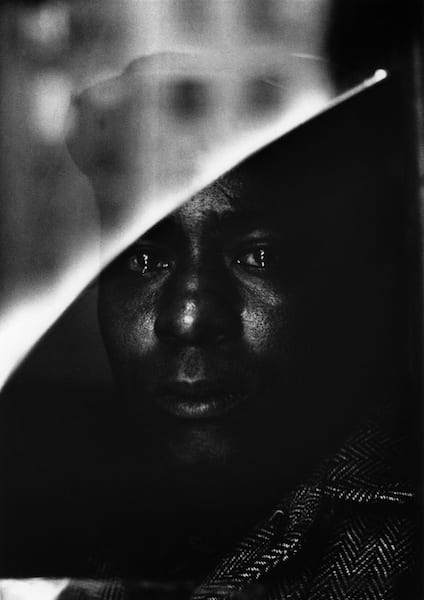
Norman Fontenelle, Sr., Harlem, New York, 1967 by Gordon Parks, © and courtesy Gordon Parks Foundation
“If you look at Gordon’s work, he was not someone went goes out and did a big war story,” continues Sealy, who is director of Autograph ABP, the Association of Black Photographers. “What he’s doing is more about trying to make something more personal, to get close. He’s working with the good documentary tropes of truth and intimacy.”
Born to a farming family in Fort Scott, Kansas in 1912, Parks was the youngest of 15 children. After his mother died when he was 11 he was sent to live with one of his sisters and her husband; by the time he was 15, he was turned out to the streets to fend for himself. He worked in brothels, and as a singer, piano player, bus boy, and semi-pro basketball player; when he landed a job in a gentlemen’s club, he took the opportunity to read many of the books in the club library.
While working as a waiter in a railway dining car, he came across illustrated magazines and became interested in photography; when he was 25 he bought his first camera in a pawn shop, and taught himself to take pictures. He went on to work for the Farm Security Administration under Roy Stryker, then with Life magazine in 1948, initially documenting racial segregation in the American South for the publication. It was an association that continued until 1972.
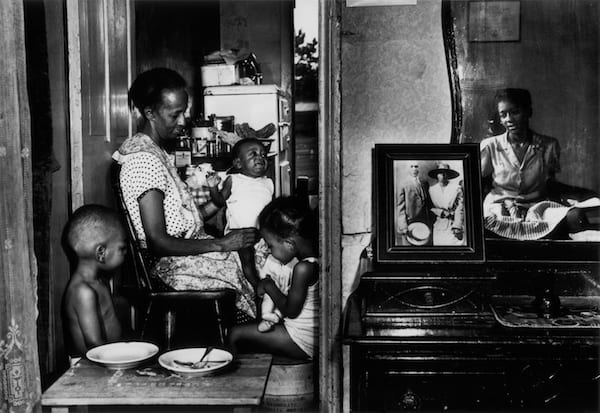
Ella Watson with her Grandchildren, Washington DC, 1942 by Gordon Parks, © and courtesy Gordon Parks Foundation
The title of the exhibition is taken from Parks’ own autobiography, published in 1966, and in it Sealy hopes to draw out critical questions concerning civil responsibility, human rights and modes of representation, picking out pertinent images such as the story on the Fontenelles and iconic shots of Martin Luther King and Muhammad Ali. Gordon Parks: A Choice of Weapons is part of Freedom City 2017, a city-wide programme across Newcastle which marks the 50 years since Newcastle University awarded Dr Martin Luther King an honorary degree.
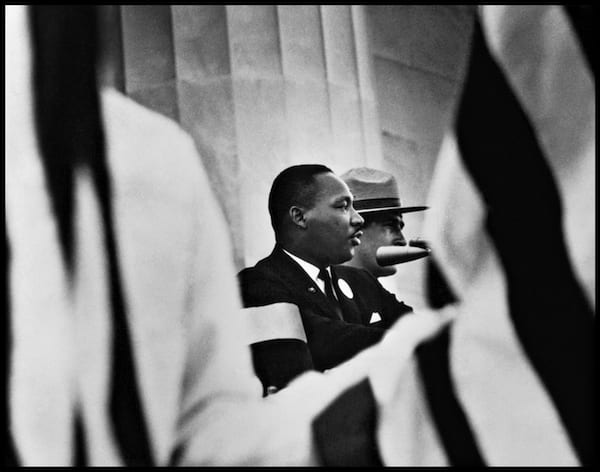
Mar n Luther King, Jr., Washington DC, 1963 by Gordon Parks, © and courtesy Gordon Parks Foundation 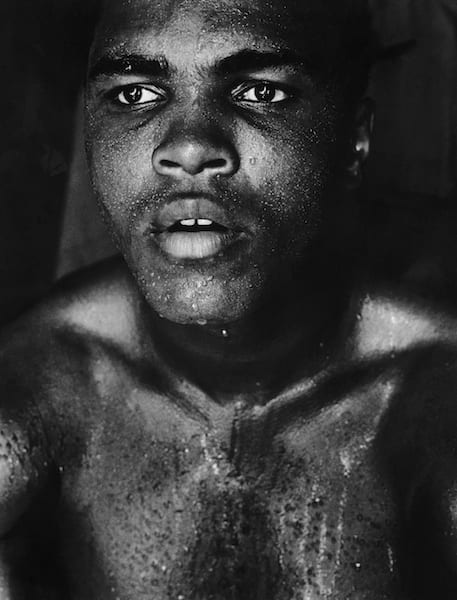
Muhammad Ali, Miami, Florida, 1966 by Gordon Parks, © and courtesy Gordon Parks Foundation
“I would like to think that what this show can do is provide an opportunity to see how far we haven’t come in the last 50 years regarding the politics of race,” he continues. There is still disproportionate violence on the black body, still disproportionate numbers locked up, and still racial intolerance. 50 years on, what progress have we made? I hope these photographs help a whole generation of younger photographers to ask questions, and hopefully inspire them to make work.”
Gordon Parks: A Choice of Weapons is on show at Side Gallery, Newcastle from 21 October-17 December. www.amber-online.com/side-gallery/ https://autograph-abp.co.uk
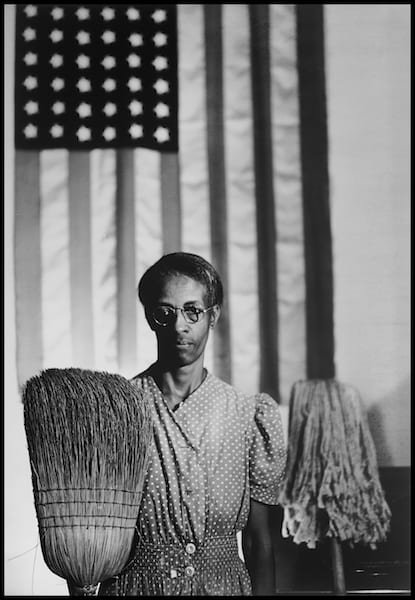
American Gothic, Washington DC, 1942 by Gordon Parks, © and courtesy Gordon Parks Foundation 
Ella Watson with her Grandchildren, Washington DC, 1942 by Gordon Parks, © and courtesy Gordon Parks Foundation 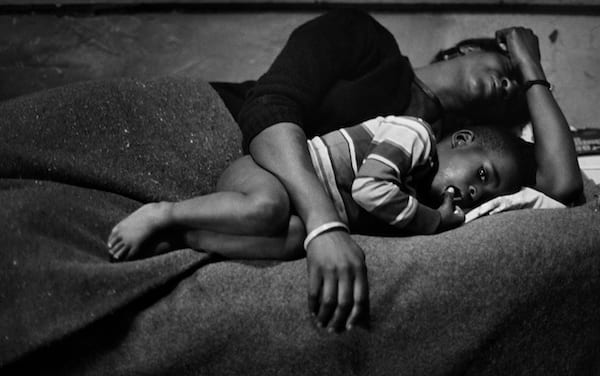
Bessie and Little Richard the Morning After She Scalded Her Husband, Harlem, New York, 1967 by Gordon Parks, © and courtesy Gordon Parks Foundation 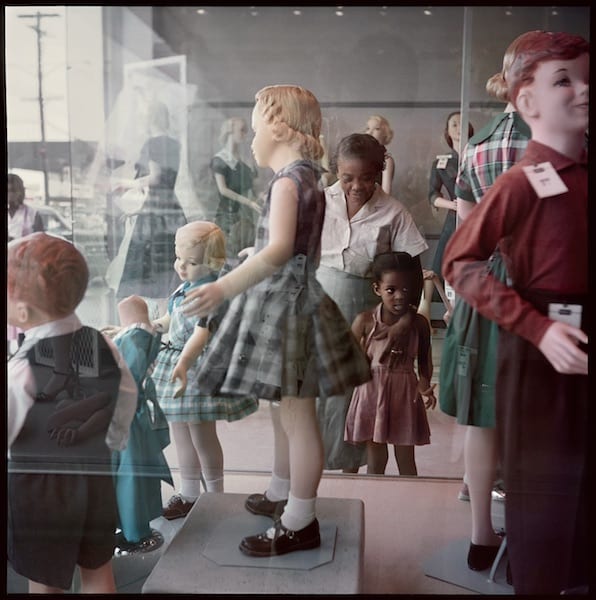
Ondria Tanner and her Grandmother Window-shopping, Mobile, Alabama, 1956 by Gordon Parks, © and courtesy Gordon Parks Foundation 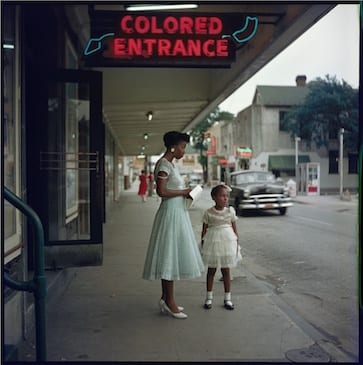
Department Store, Mobile, Alabama, 1956 by Gordon Parks, © and courtesy Gordon Parks Foundation 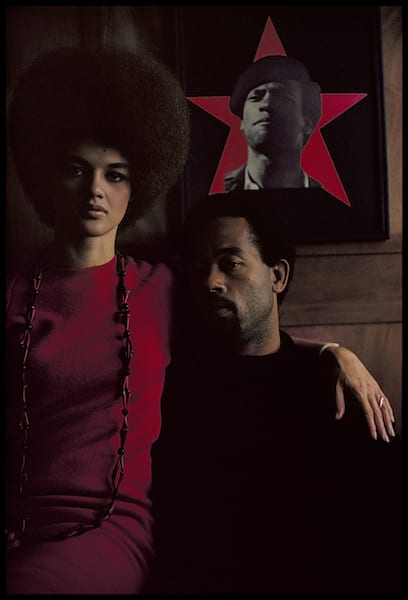
Eldridge Cleaver and His Wife, Kathleen, Algiers, Algeria, 1970 by Gordon Parks, © and courtesy Gordon Parks Foundation
“Parks never forgot his own experiences of poverty and cold [as a child and young man],” Sealy adds. “Working in the context of Life, he chose to use the position he achieved to represent his community in the struggle for social change.”

“If you look at Gordon’s work, he was not someone went goes out and did a big war story,” continues Sealy, who is director of Autograph ABP, the Association of Black Photographers. “What he’s doing is more about trying to make something more personal, to get close. He’s working with the good documentary tropes of truth and intimacy.”
Born to a farming family in Fort Scott, Kansas in 1912, Parks was the youngest of 15 children. After his mother died when he was 11 he was sent to live with one of his sisters and her husband; by the time he was 15, he was turned out to the streets to fend for himself. He worked in brothels, and as a singer, piano player, bus boy, and semi-pro basketball player; when he landed a job in a gentlemen’s club, he took the opportunity to read many of the books in the club library.
While working as a waiter in a railway dining car, he came across illustrated magazines and became interested in photography; when he was 25 he bought his first camera in a pawn shop, and taught himself to take pictures. He went on to work for the Farm Security Administration under Roy Stryker, then with Life magazine in 1948, initially documenting racial segregation in the American South for the publication. It was an association that continued until 1972.

The title of the exhibition is taken from Parks’ own autobiography, published in 1966, and in it Sealy hopes to draw out critical questions concerning civil responsibility, human rights and modes of representation, picking out pertinent images such as the story on the Fontenelles and iconic shots of Martin Luther King and Muhammad Ali. Gordon Parks: A Choice of Weapons is part of Freedom City 2017, a city-wide programme across Newcastle which marks the 50 years since Newcastle University awarded Dr Martin Luther King an honorary degree.


“I would like to think that what this show can do is provide an opportunity to see how far we haven’t come in the last 50 years regarding the politics of race,” he continues. There is still disproportionate violence on the black body, still disproportionate numbers locked up, and still racial intolerance. 50 years on, what progress have we made? I hope these photographs help a whole generation of younger photographers to ask questions, and hopefully inspire them to make work.”
Gordon Parks: A Choice of Weapons is on show at Side Gallery, Newcastle from 21 October-17 December. www.amber-online.com/side-gallery/ https://autograph-abp.co.uk







